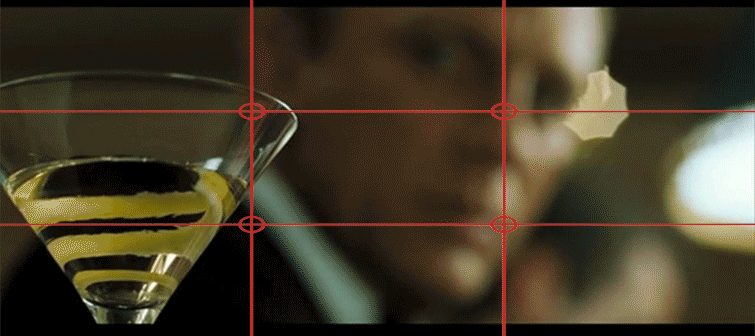You want to create better videos but you’re terrified of creating videos because of any of these reasons.
- Stage fright.
- Can’t relax while recording
- Video not being good enough.
- People not liking the video or leaving bad comments.
- Don’t have fancy equipment.
- It costs a lot of money.
It’s okay. Most of us have been there. The first step is the hardest, so just close your eyes, choose a topic, write a short script or better yet create a video off-the-cuff, and start recording! It always gets better from the second video onwards, trust me 😉.
You don’t need fancy equipment to create better videos, a phone with a good quality camera is enough, too!
Here are a few basic tips to help you nail (almost) your first (or pretty much any) video.
1. Always use the back camera
Since the front camera in phones is traditionally used for video calling, or now Snapchatting and going live on Facebook, it is usually of lesser resolution (megapixels) than the rear camera. The back camera has a better sensor since that’s the camera you typically use for taking pictures at a distance and shooting decent quality videos.
This is why you should always use the main camera of your phone (back camera) to shoot professional videos.
2. Use a tripod
Stability and focus are crucial elements in video making. A blurry video or one that goes out of focus constantly will look amateur and your video quality will degrade because of shakiness.
So use a tripod. A good tripod does not only provides stability to your video and let’s you shoot with ease, but you can use its legs and head to reach places and shoot at distances and heights that you couldn’t reach otherwise.
Just place the tripod as close to your working table as possible and point it’s head downwards so you can shoot overhead. You can even try to close the tripod’s legs to get some extra height.
You can, of course, try to hold your phone steady by using both of your hands and locking your elbows into your body while shooting a video, but even a little movement in the middle of shooting will ruin your video so it’s best not to take any chances.
3. Record in landscape
When you’re viewing your video on a vertical screen like your mobile, video shot in portrait mode might not look too bad, but as soon as you tilt your phone or watch the video on widescreen, 2 vertical bars on either side of the video will make a comeback.
There are two reasons why you should always shoot in landscape mode. One, it makes a better video and is more aesthetically pleasing when viewed on a widescreen. And, two, you don’t get 2 vertical black bars on the sides of your video that you’d get if you shot in portrait mode.
So, always, always shoot horizontally.
4. Adhere to the rule of thirds
If you’re a photography enthusiast you’ve probably heard about the rule of thirds. If you’re a video-phobic marketer, then you probably haven’t. It’s okay, I’ll make it easy for you.
The basic rule of composition is the rule of thirds. It gives you ideas where you can place your subject within the frame to make it look aesthetically pleasing. Normally, amateur photographers would just put the subject at the centre of the frame and shoot, but adhering to the rule of thirds will get you a far better composition.
Mentally divide your frame into two equally spaced horizontal and vertical lines so that they create 9 equal-sized sections.

Now when you’re shooting, place your subject on either of the intersecting lines.

5. Use a good amount of lighting
Always record your videos in a well-lit area.
Not using enough lighting is a rookie mistake. You need to shoot your videos with a good amount of lighting. If you can shoot outdoors, take advantage of daylight. And if you can add additional lights in your daylight shoot, that’s even better.
However, if you’re shooting indoors, there are a couple of things you need to make sure of.
- Add as many additional lights as you can.
- If you’re on a budget and don’t want to spend too much on lights, just gather all the lamps and other portable light sources you can from your home and use them.
- Place them near the recording area.
- Place your subject near the window and use natural light as much as possible.
- Avoid overhead lights that bounce off your subject’s head.
- Don’t directly point the light towards your subject’s face. It’s highly uncomfortable, unattractive, enhances harsh shadows, and isn’t aesthetically appealing to the viewers either.
- Instead, bounce the light off ceilings, walls and floors. You can even use reflective panels and mirrors to bounce off light. Sounds complicated? It isn’t.
Experiment, experiment, experiment. Try different techniques, use equipment available at hand, and experiment to see what works for you. Add and subtract different light sources at hand to see which combination of lights creates the best video.
6. Consider backgrounds
There are two major kinds of backgrounds you can choose from:
- Fake backgrounds: paper, screen, curtains
- Real backgrounds: your office, your room, outdoors
If you’re shooting an indoor video, you have an option to choose either a fake background or roll with your real background. It’s completely up to you.
Several brands and influencers use a plain white or single coloured background. Fake background works great when you,
- Like to keep the attention on you (or the subject)
- Hate messy, chaotic backgrounds
- Don’t want to deal with distractions in the background
- Look professional
Real backgrounds are great when you want your and your brand’s personality to peek through your videos. They scream authentic, genuine, and personal.
However, with a real background, you need to make sure there are no distractions. And if you have distractions in the background, try to blur them through your camera or while editing.
7. Monitor the audio
A great video that’s inaudible (or employees arguing in the background) will not hold the audience’s attention. You need to make sure your audio is on point when you publish your video.
- If you’re shooting outdoors or even indoors with people present, you can shoot it on mute and add voiceover while editing.
- Invest in a good quality microphone that you clip on your clothes while shooting.
- If you’re shooting indoors, make sure there’s no background noise. Close down all the windows, inform people that you’re shooting a video, and put your phone on silent.
- Before starting the actual filming of the video, do a soundcheck. Can you hear your own (or your subject’s) voice clearly?
- Is there any background noise you need to eliminate? Is the microphone working properly?
- Do this every single time to create better videos
Create better videos isn’t rocket science. But it requires a lot of practice and experimentation. But keep on it. Don’t give up. You’ll eventually develop your own style and accumulate a group of people who love your videos!
Let me know what you think of the Maven Monday series.



